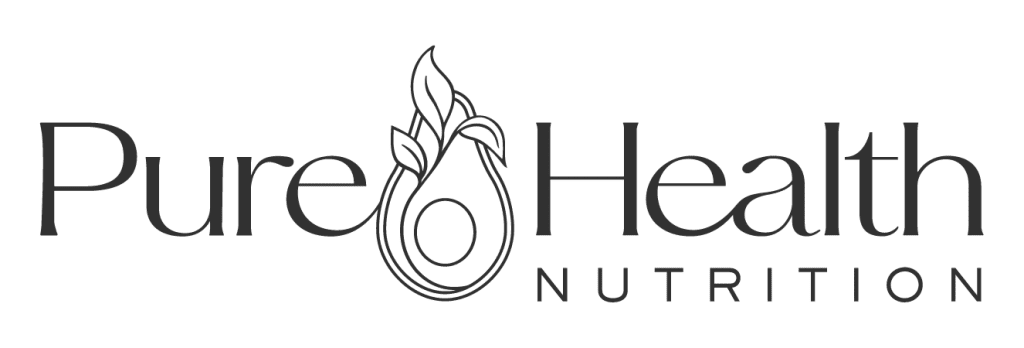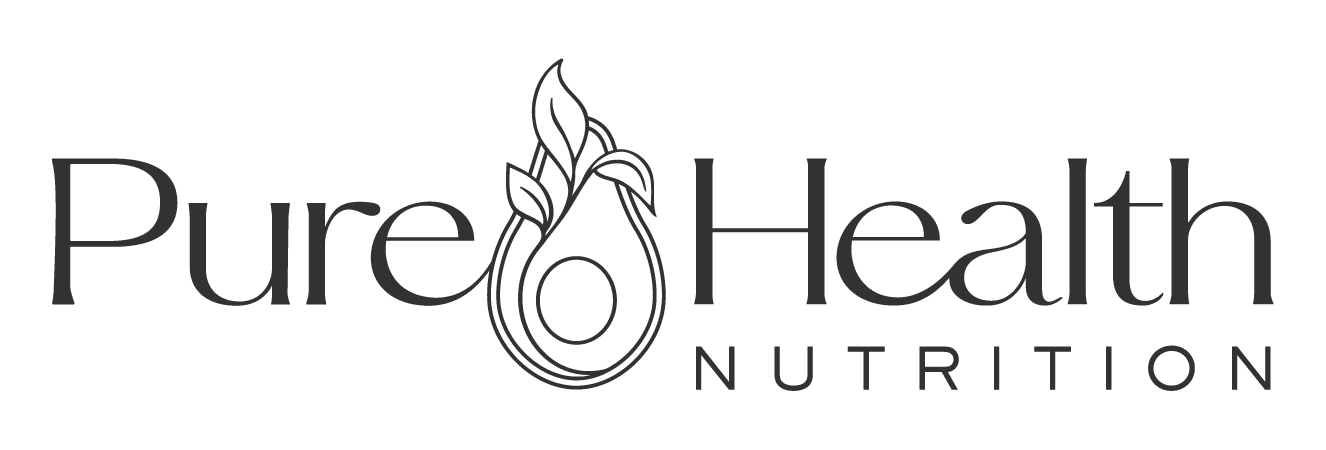SIBO: How can we help?
Understanding and Overcoming Small Intestinal Bacterial Overgrowth
Small Intestinal Bacterial Overgrowth (SIBO) is a prevalent yet often misunderstood condition that affects many individuals, causing a range of uncomfortable symptoms. At Pure Health Nutrition Clinic in Perth, our team of experienced nutritionists are dedicated to helping individuals with SIBO by offering personalised, evidence-based approaches to address this condition effectively. In this blog, we will delve into the intricacies of SIBO, its causes, symptoms, testing methods, and most importantly, how we can help you tackle it.
What is SIBO?
SIBO, an abbreviation for Small Intestinal Bacterial Overgrowth, occurs when there is an excessive growth of bacteria in the small intestine, which should typically be sparsely populated compared to the large intestine. This bacteria, ferment the starches and fibre you eat, leading to the production of gas as a by-product. The gas damages the delicate lining of the small intestine, causing a range of distressing symptoms such as bloating, distension, wind, cramping, reflux, inflammation, and impaired nutrient absorption.
The Link Between SIBO and IBS
It’s important to note that SIBO is responsible for 60–80% of Irritable Bowel Syndrome (IBS) cases. This connection underscores the significance of addressing SIBO for effective management of IBS symptoms.
Understanding SIBO Types
There are different types of SIBO based on the types of gases produced by the bacteria:
- Hydrogen Dominant: Associated with diarrhoea or mixed bowel habits
- Methane dominance: Linked to constipation
- Hydrogen Sulphide Dominant: Presents as SIBO-D (diarrhoea) or LIBO-C (constipation)
- Mixed Hydrogen and Methane: A combination of both types
Root Causes of SIBO
Several factors contribute to the development of SIBO, including:
- Low stomach acid, which fails to suppress bacterial growth
- Pancreatic enzyme deficiency, affecting proper digestion
- Impaired motility in the small intestine, hindering the movement of food
- Small intestinal obstructions or adhesions which promote bacterial growth
- Previous episodes of food poisoning or gastroenteritis that disrupt the gut’s balance
- Nerve damage affects gastrointestinal motility
- Medications such as opiates and PPIs that alter gut function
- Antibiotic courses, which can disrupt the gut microbiome
- Chronic stress, impacting digestive processes
- Conditions like hypothyroidism slow motility in the digestive tract
Recognising the Symptoms of SIBO
Symptoms of SIBO can vary from mild to severe and may include:
- Bloating and distension after eating
- Excessive gas, often with an odour reminiscent of rotten eggs
- Frequent burping
- Reflux and bad breath
- Abdominal pain or discomfort
- Food intolerances
- Constipation that worsens with fibre intake
- Nutrient deficiencies, such as vitamin B12 and iron
- Unintended weight loss or gain
- Fatigue and brain fog
- Skin issues like acne
- Prebiotics and probiotics may worsen symptoms
Accurate Testing for SIBO
The most common and reliable method to diagnose SIBO is the hydrogen-methane breath test. This test involves ingesting a substrate (lactulose, glucose, or fructose), which is fermented by the bacteria in the small intestine, resulting in the production of hydrogen, methane, and hydrogen sulphide gases. These gases are then absorbed into the bloodstream and exhaled through the breath. This non-invasive and widely available test helps identify the type and extent of SIBO, which provides crucial information to ensure effective treatment.
Diagnosing SIBO: Unravelling the Breath Testing Method
Diagnosing SIBO can be a challenging task due to the lack of a definitive gold standard. However, the most common and widely used method for assessing SIBO is through breath testing, as it offers a simple, safe, and non-invasive approach. While breath testing provides valuable insights, it’s essential to be aware of its limitations, as individual variations in bacterium types can influence the test results.
The Breath Testing Procedure
The breath testing procedure for SIBO typically follows these steps:
- Pre-Test Diet: Before the test, individuals may be advised to follow a specific pre-test diet to prepare their digestive system.
- Overnight Fast: Patients fast overnight to ensure accurate baseline measurements.
- Baseline Breath Sample: A baseline breath sample is collected to establish a reference point for future comparisons.
- Carbohydrate Mix Ingestion: Individuals are required to drink a carbohydrate solution, usually containing 10g of lactulose or 50–80 g of glucose dissolved in 120–200 ml of water.
- Sequential Breath Sampling: Breath samples are collected at regular intervals, typically every 15–30 minutes, over a period of 3–4 hours after ingesting the carbohydrate mix.
How Breath Testing Works for SIBO
The principle underlying breath testing lies in the ability of the bacteria in the small intestine to consume the ingested carbohydrates and produce gas by-products, such as hydrogen. The concentration of hydrogen in the breath is then measured to detect the presence of SIBO.
Limitations and Interpretation Challenges
While breath testing is a valuable diagnostic tool, it’s crucial to acknowledge its limitations. Approximately 10% of adults may not be colonised with bacteria capable of producing hydrogen, which can lead to false-negative test results. This highlights the importance of considering clinical symptoms and individual context when interpreting the test results.
Factors Influencing Test Accuracy
Several factors can impact the accuracy of breath testing for SIBO, including recent antibiotic use, as it may alter the bacterial composition in the gut. Additionally, the effects of H2RAs (Histamine-2 receptor antagonists) and PPIs (Proton pump inhibitors) on breath test results remain a subject of debate among healthcare professionals.
Understanding Positive Results
A positive result is indicated by a significant increase in hydrogen concentration from the baseline fasting level to a value greater than 10–12 parts per million (ppm) after ingesting a 50g glucose load or greater than 20 ppm following lactulose within the first 90 minutes of the test. Alternatively, a ‘double peak’ of hydrogen may occur in the test results, which is also considered a positive indicator of SIBO.
Interpreting Test Results: The Role of Healthcare Professionals
The interpretation of breath test results requires expertise from trained healthcare professionals who can consider various factors, including individual symptoms, medical history, and other diagnostic tests, to arrive at an accurate diagnosis. At Pure Health Nutrition Clinic, our experienced nutritionists specialise in SIBO management and ensure that each client receives a thorough evaluation and personalised treatment plans.
How We Can Help You with SIBO
At Pure Health Nutrition Clinic in Perth, we take a comprehensive and personalised approach to addressing SIBO and its root causes. Our team of experienced nutritionists employ specific pathology testing, including stool testing and breath tests, to accurately assess the severity of SIBO and tailor treatment protocols to your unique needs.
Our approach includes:
Treating the Root Cause
Identifying and addressing the underlying factors contributing to SIBO to prevent relapse and ensure long-term relief. This includes exploring multiple body systems, past health history, family history, arthrometric assessments, diet, lifestyle, and functional pathology testing.
Individualised Treatment Protocols
Customising treatment plans based on your specific SIBO type, symptoms, and health history.
1:1 Support and Accountability
Guiding you throughout your journey with personalised support, regular follow-ups, and accountability.
Gut-Friendly Recipes
Offering a vast collection of gut-friendly recipes to support your healing journey and make healthy eating enjoyable. Check out some of our free gut friendly recipes here.
Nutritional Strategies to Address SIBO
While there is currently no specific prescribed diet for managing SIBO, adopting certain dietary strategies can be beneficial. One such approach involves eliminating high-FODMAP foods from your diet.
FODMAPs are short-chain carbohydrates commonly found in a variety of foods. Normally, these sugars serve as a source of fuel for gut bacteria, promoting their growth. However, in individuals with SIBO, consuming FODMAPs can lead to excessive gas production by these bacteria.
Numerous studies have demonstrated the effectiveness of a low-FODMAP diet in managing conditions like Irritable Bowel Syndrome (IBS) and Inflammatory Bowel Disease (IBD). While there is not enough direct evidence to claim that the low-FODMAP diet specifically addresses SIBO, many symptoms of SIBO overlap with those of IBS and IBD. Consequently, individuals with SIBO may find relief from their symptoms by following a low-FODMAP diet.
Let us help restore your digestive health!
SIBO is a complex yet manageable condition that requires a personalised and holistic approach. As dedicated nutritionists in Perth, we at Pure Health Nutrition Clinic are committed to helping you overcome SIBO and restore digestive health. Through accurate testing, individualised treatment plans, and ongoing support, we aim to empower you with the knowledge and tools needed to reclaim your well-being and live life to the fullest.
If you suspect you may have SIBO or are struggling with digestive symptoms, we encourage you to reach out to our team for professional guidance and compassionate care. Book in a 1:1 initial consultation at our Perth clinic to get started. Together, we can conquer SIBO and embark on a journey towards better health and vitality.

